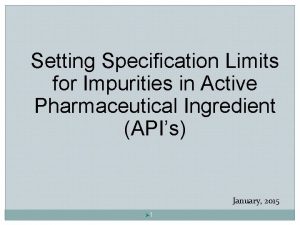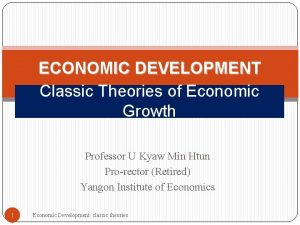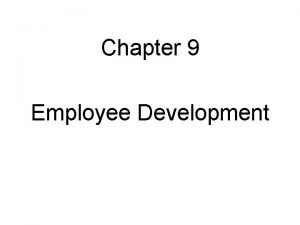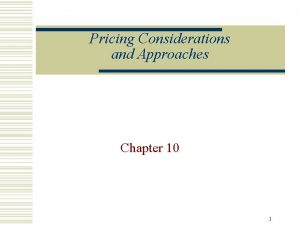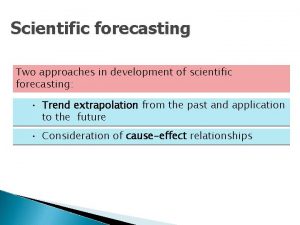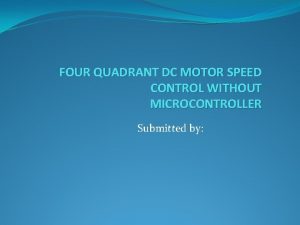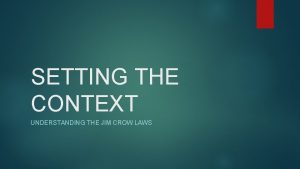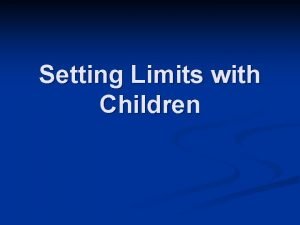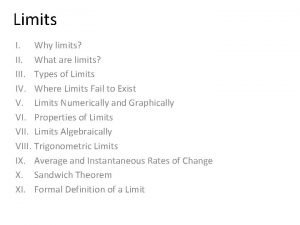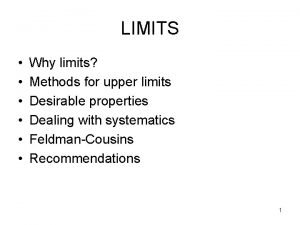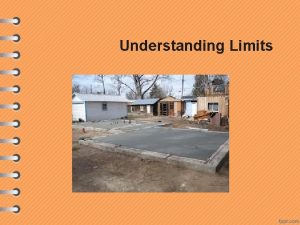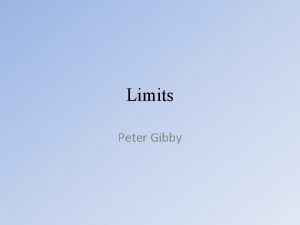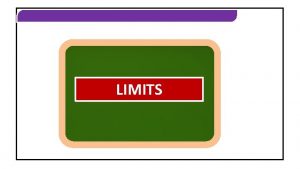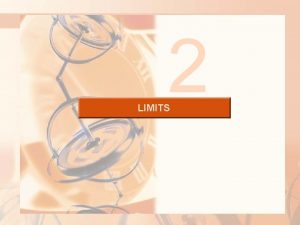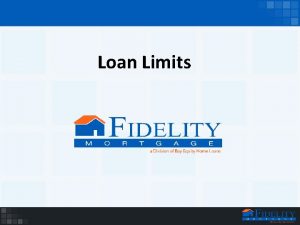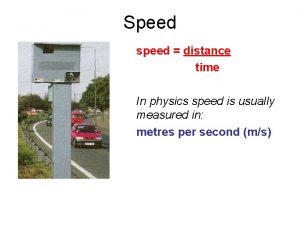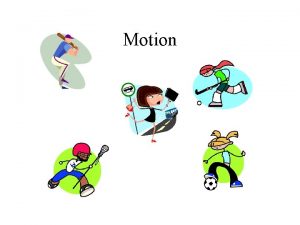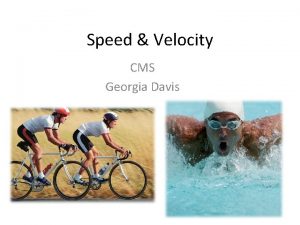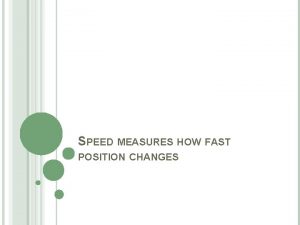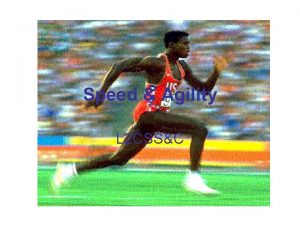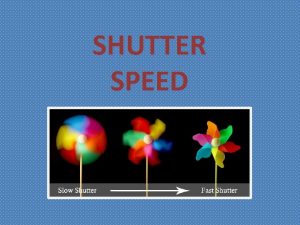Approaches for Setting Speed Limits Four General Approaches






















- Slides: 22

Approaches for Setting Speed Limits

Four General Approaches Engineering Approach Injury minimization/Safe system philosophy Optimization Approach Expert System Approach (USLIMITS 2)

How Approaches are Applied Street by street basis • Engineering • Optimization • Expert Systems Adjust system-wide • Injury Minimization/Safe System Philosophy

Engineering Approach • A two-step process • Speed limit is set according to the 85 th percentile speed • Adjusted based on other criterion ØTraffic and infrastructure conditions such as pedestrian use, median presence, etc. • Relies on engineering judgment The 85 th percentile speed is defined as, “the speed at or below which 85 percent of all vehicles are observed to travel under free-flowing conditions past a monitored point. ” Another way to consider this is the speed at which only 15% of traffic violate on average.

Optimization Approach • Set Optimal Speed Limit to Minimize Societal Costs • To determine optimal speed limit examines: ØTravel Time ØVehicle Operating Costs ØCrash History ØEmissions and Fuel Consumption • No specific approach, model must be developed each time • Time and data intensive

Expert Systems • Computer Based Evaluation • Uses USLIMITS 2 to simulate judgment of speed limit experts • Created by Federal Highway Administration (FHWA) through the National Cooperative Highway Research Program (NCHRP) • Contains accumulated knowledge and experience and set of rules for applying knowledge • Can be a bit of a “black box” feel

Injury Minimization/Safe System Philosophy • Maximize Road Safety • Examines: • Road Types • Crash History • Injury Rates • Emphasis on non-motorized users • Based on link between travel speeds and serious crashes/injuries • Can result in speed limits lower than those traditionally used • May be more applicable to urban rather than rural environments

Use in Minnesota Statutory Speed Limits OR Regulatory Speed Limits Engineering Approach STUDY • Existing Speeds • Crash History • May consider other factors • MUTCD guidance = Speed Limit should be within 5 mph of the 85 th percentile speed • In MN, City has statutory ability to set speed limit based on their own engineering approach. Traditionally Speed limits are set by Statute or by Engineering Study

Use in the U. S. 1) Engineering Approach Widely used in US 2) Optimization Approach 3) Injury minimization/Safe system philosophy 4) Expert System Approach (USLIMITS 2) Gaining use in US urban areas

Use in the U. S. 2018 Survey Conducted by National Committee on Uniform Traffic Devices (NCUTCD) • Over 50% stated most important factors for speed limit setting = speed of vehicles, crash history, context (location) • Top-most relied upon measure: 85 th percentile speed (88%), design speed (21%), pace speed (17%) • Related to speed limit and rounding, most frequent response was to round up or down 5 mph from the 85 th percentile • When given option to choose how they “would” do it if given the choice offered the following…. . Respondents included engineering consultants, state, and local agencies

2018 survey conducted by NCUTCD Q 11: How would you set speed limits if given the choice? • If given a choice, most respondents stated a study to document decision was important, but they would like to expand the way they would set speed limits if given a choice • Not everyone agrees on which approach to setting speed limits is best

Broadening the Engineering Approach Beyond 85 th Percentile • 2017 National Transportation Safety Board (NTSB) Report, “Reducing Speeding-Related Crashes Involving Passenger Vehicles”, recommended to the FHWA to revise the Manual on Uniform Traffic Control Devices (MUTCD) Ø Revise the MUTCD to remove the guidance that speed limits should be within 5 mph of the 85 th percentile speed Ø Incorporate the safe system approach for urban roads to strengthen protection for vulnerable road users.

Broadening the Engineering Approach Beyond 85 th Percentile • In 2019 the NCUTCD, in response to 2017 NTSB report, proposed changes to the MUTCD: Ø Emphasize role of other factors in setting speed limits in addition to 85 th percentile speed Ø Retain reference to 85 th percentile as factor freeways, expressways, and rural areas Ø Leave setting of speed zones broad to allow state/local authorities to establish their own criteria • In early 2021, FHWA proposed changes to the MUTCD to reinforce the understanding that other factors, in addition to the 85 th-percentile speed, have a role in setting speed limits. These changes would allow agencies to establish detailed criteria based upon national guidance or research, outside the MUTCD. • Anticipated Mid 2021, NCHRP 17 -76 “Guidance for the Setting of Speed Limits” • A national speed limit guide and tool for practitioners to set speed limits on a street by street basis based on roadway context/use

Case Examples of Each Speed Limit Setting Approach • Urban Example Ø 4 -lane divided minor arterial ØPosted Speed Limit 40 MPH ØSurrounded by single and multi-family residential, neighborhood commercial ØTransit Route

Case Examples of Each Speed Limit Setting Approach • Suburban/Rural Example Ø 3 -lane minor arterial with paved shoulders ØPosted Speed 40 MPH ØSurrounded by farmland with some residential

Engineering Approach Operating Speed Context Existing Posted speed limit 50 th percentile 85 th percentile 10 mph pace Recommended Speed Limit using Engineering Approach Data Collected Urban 40 mph 44 mph 38 -47 mph 40 or 45 mph Rural 40 mph 41 mph 48 mph 35 -44 mph 45 mph

Uses Economic Analysis to determine: ØCrash Cost ØTravel Time Cost ØFuel Consumption Cost ØCost of Emissions This approach takes 8 to 10 times as long to complete as the other approaches Optimization Approach

Optimization Approach URBAN Recommended Speed Limit using Optimization Approach = 45 MPH Look at optimal speed between cost to society and cost to users

Optimization Approach RURAL Recommended Speed Limit using Optimization Approach = 35 MPH Look at optimal speed between cost to society and cost to users

Expert System Approach (USLIMITS 2) Context Recommended Existing Posted Speed Limit speed limit using Expert Systems Urban 40 mph 45 mph Rural 40 mph 50 mph

Injury Minimization/Safe System Philosophy Context Existing Posted Speed Limit Data Collected Roadway Recommended Speed Limit using Injury NCHRP Rpt. Min. /Safe 855 System 50 th percentile 85 th percentile 10 -MPH Pace % Injury Crashes % Ped/Bike Injury Urban 40 mph Minor Arterial 40 mph 44 mph 38 -47 mph 41% 100% (3 Minor, 2 Possible) 30 -45 mph 40 mph Rural 40 mph Minor Arterial 41 mph 48 mph 35 -44 mph 41% 100% (1 serious, 1 minor) > 45 mph No specific framework in place for this philosophy. Must pair together many references and studies to draw conclusion.

Summary – Recommended Speed Limit Context Existing Posted Speed Engineering Approach Limit Operating Speed Optimization Expert Systems Injury Min. /Safe System Urban 40 mph 40/45 mph 40 mph Rural 40 mph 45 mph 35 mph 50 mph 45 mph Difference is not too great, but each approach does vary in its results
 Limits involving infinity
Limits involving infinity Histogram polygon graph
Histogram polygon graph Dts expert 500 gate motor manual
Dts expert 500 gate motor manual Impurity specification limits
Impurity specification limits Speed time and distance formula
Speed time and distance formula One effect of high-speed driving is speed smear, in which
One effect of high-speed driving is speed smear, in which Speed detection of moving vehicle using speed cameras
Speed detection of moving vehicle using speed cameras Dualistic development thesis
Dualistic development thesis Four approaches to employee development
Four approaches to employee development General pricing approaches
General pricing approaches What are the two types of forecasting
What are the two types of forecasting Four quadrant dc motor control without microcontroller
Four quadrant dc motor control without microcontroller Understanding jim crow (setting the setting)
Understanding jim crow (setting the setting) Kontinuitetshantering
Kontinuitetshantering Novell typiska drag
Novell typiska drag Nationell inriktning för artificiell intelligens
Nationell inriktning för artificiell intelligens Returpilarna
Returpilarna Varför kallas perioden 1918-1939 för mellankrigstiden
Varför kallas perioden 1918-1939 för mellankrigstiden En lathund för arbete med kontinuitetshantering
En lathund för arbete med kontinuitetshantering Kassaregister ideell förening
Kassaregister ideell förening Personlig tidbok för yrkesförare
Personlig tidbok för yrkesförare Sura för anatom
Sura för anatom Förklara densitet för barn
Förklara densitet för barn



